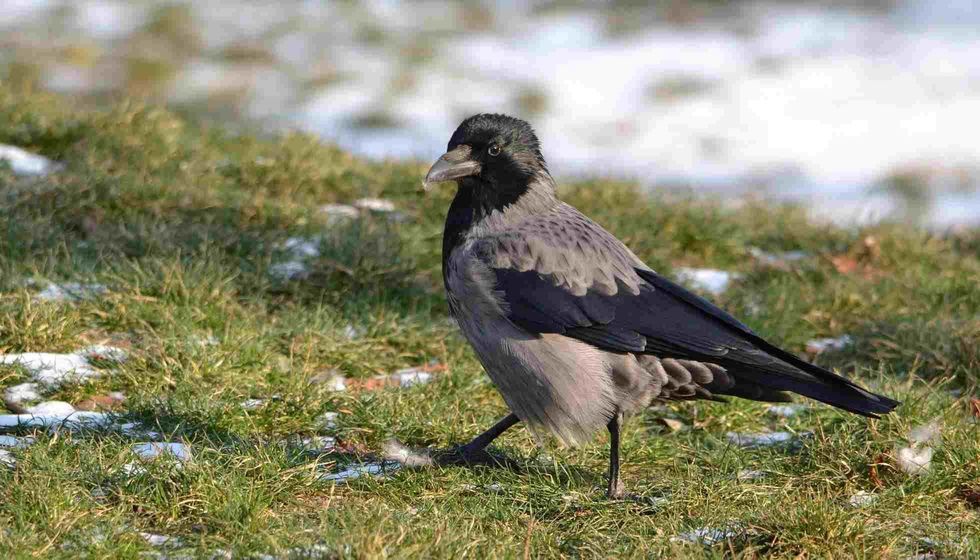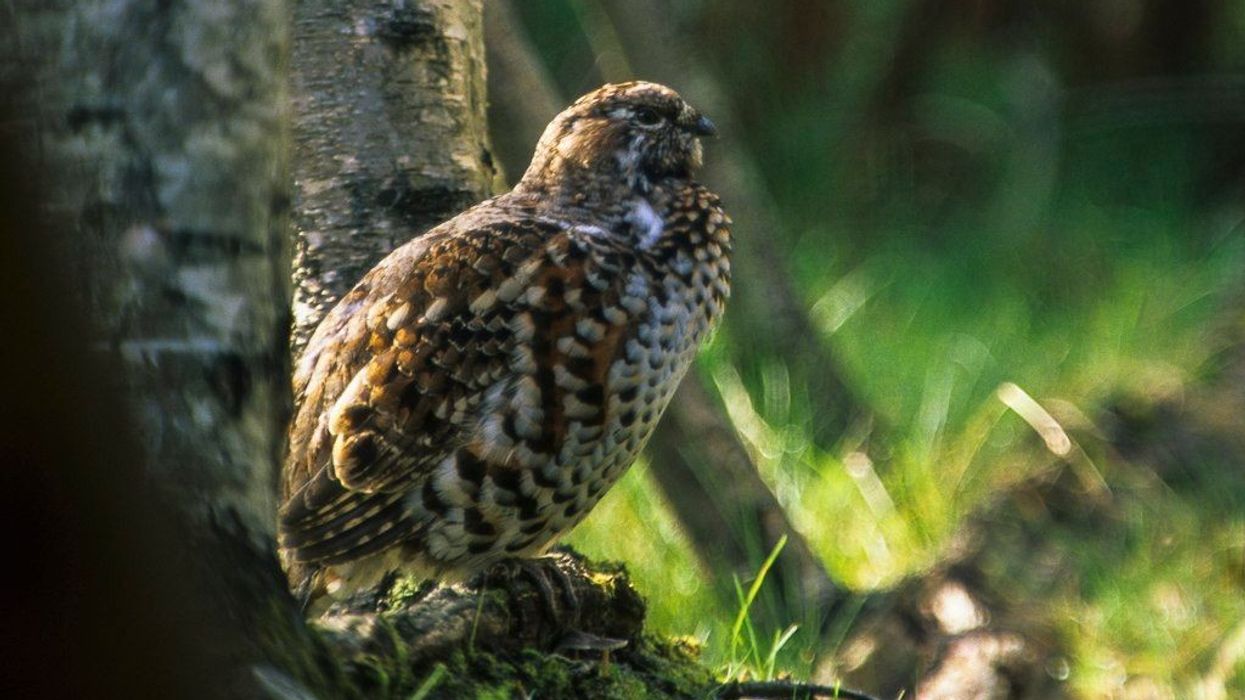We are well acquainted with the crows but have you ever heard about a hooded crow (Corvus cornix)? This kind of crow belongs to the crow family and is quite similar to the carrion crow (Corvus corone).
However, one unique fact about these crows is that they will always be seen in groups and have a sociable feeding habit. Hooded crows feed mainly on the remains of dead animals, otherwise known as carrion.
The unique combination of grey and black gives them a distinct look in comparison to the carrion crows. The southern populations of these crows are more sedentary as compared to the northern populations.
Hooded crows are found in Northern Ireland, northern Scotland, and the Isle of Man. They also have a peculiar habit of stealing the eggs from the nest of other birds.
All these extraordinary features distinguish them from the other species of the crow family. Here are some interesting facts about the hooded crow mythology. After reading these hooded Crow facts, do check our other articles on the magpie and the common raven.
Hooded Crow Interesting Facts
What type of animal is a hooded crow?
The hooded crow belongs to the bird family. More specifically, to the crow family. These crows are mainly found in the northern parts of Scotland, Ireland, and the Isle of Man. The features of these crows are similar to carrion crows, however, this species can be considered more sociable than carrion crows.
You will mainly find them feeding together on a dead animal in groups. They are clever and often considered an unmistakable species of crow. Their adaptable nature also makes them different from the carrion crows.
What class of animal does a hooded crow belong to?
The hooded crow species belong to the class Aves and feed mainly on dead animals, grains, young birds, and also on the eggs stolen from the nests of the other birds.
How many hooded crows are there in the world?
There are around 160,000-230,000 pairs of breeding hooded crows in the world. This is an estimated range of hooded crows present in the world. With the increase in the breeding of these crows, their population is increasing.
Where does a hooded crow live?
The hooded crow nesting is most often found in woodland, farmlands, towns, and gardens in north and west Scotland, Northern Ireland, and The Isle of Man. They mainly live in their nests built on tall trees or old buildings. These nests are very rarely built near the ground.
What is a hooded crow's habitat?
The hooded crow's habitat includes diverse places. These kinds of crows are quite adaptable, unlike carrion crows. Due to their adaptable nature, this species can reside almost anywhere. However, they favor wooded scrubs, villages, forests, and large brushy grasslands. Moreover, being sociable, these birds are mainly seen in groups.
Who do hooded crows live with?
Hooded crows are socially adaptable creatures. Therefore they mainly live in groups. Considered intelligent creatures, these crows can also be adopted as pets. This bird species can quickly adapt to the environment in which they live and might form a good bond with their owners.
How long does a hooded crow live?
These medium-sized species of crow have a maximum lifespan of 16 years. However, this is just a recorded age and it might vary according to their surroundings and environment.
How do they reproduce?
Hooded crows build their nests away from the ground and the female crows lay four or five eggs at a time in the nest after the breeding process is over. These eggs have a few dark spots on them.
The female crow incubates these eggs for 17-20 days. The chicks live in a family group until the first winter, after which they are left to become independent.
What is their conservation status?
There is no threat of extinction for hooded crows as their population is increasing all the time. There are approximately one million hooded crows in existence today.
Hooded Crow Fun Facts
What do hooded crows look like?

Popularly known as the hoodie crow, these crows are black and have a glossy sheen on their skin and tail. They have an ash-grey plumage and a dark beak and legs.
Both the male and the female hooded crows look alike. The only fact to be mentioned is that the male hooded crows are larger compared to the females. Their entirely black and grey feathers provide a different and unique look to the bird
How cute are they?
Hooded crows have fine black features that make them more sneaky and less cute. However, their sociable nature might make them cute for some people, and their song is adorable.
How do they communicate?
Hooded crows communicate with a cawing called 'kra kra'. This cawing sounds like a song and is similar to the carrion crow's song. At the breeding grounds, they often communicate through songs, and soft gurgling and rattling sounds.
How big is a hooded crow?
The length of a hooded crow is 19-20 in (48-52 cm), and the wingspan is around 33-41 in (84-105 cm). This is similar to a carrion crow.
How fast can a hooded crow fly?
A hooded crow flies at a speed of up to 70 mph (113 kph) (when diving) and while flying has a wingspan of around 33-41 in (84-105 cm).
How much does a hooded crow weigh?
A hooded crow adult weighs between 1-1.3 lb (400-600 g), which is comparatively less than the average weight range of an American crow.
What are the male and female names of the species?
The male and female name of the species is male hooded crow and female hooded crow respectively.
What would you call a baby hooded crow?
A baby-hooded crow is known as a chick. These little chicks are fed by both parents for at least three to five weeks after they are born.
What do they eat?
The hooded crow's diet consists of mainly dead animals, just like the carrion crows. Being omnivorous, the hooded crow also eats a variety of insects, stolen eggs of other birds, and sometimes even berries.
Are they aggressive?
These crows can sometimes act aggressively and break away from almost anything that comes into contact with their beak. Moreover, there should be an interaction of these crows with people daily to keep them in control. However, one cannot trust them because their weapon-like beak can cause severe injuries.
Would they make a good pet?
Hooded crows are socially adaptable creatures. Thus, they can easily create a good bond with their owners.
A hooded crow pet can also interpret the commands of the owner due to its intelligence and cleverness. Sometimes these birds can turn hostile and become depressed due to the rude behavior of their owners. They feed primarily on insects and meat from dead animals, so taking care of their diet is also a big challenge.
Did you know...
Hooded crows are quite secretive about their nests.
Being excellent mimics, these crows can easily copy the sounds and words of other animals and even humans!
As a pet, these crows with black heads do not forget or forgive the rude behavior of their owners.
These crows are large, therefore require a larger space in which to fly.
An interesting fact about these hooded crows is that they might often focus on the television or your conversations.
When we compare a hooded crow and a black crow/carrion crow, many of us find it difficult to distinguish between them. Until recently, the two species, Corvus corone, and Corvus cornix were thought to belong to the same species.
In areas where the two species, the carrion crow and hooded crow, overlap there can also be some interbreeding with the hybrid chicks having a mix of gray and black body plumage. Like a carrion crow diet, a hooded crow diet primarily features dead animals.
What is the hooded crow known as locally where it lives?
The hooded crow is known by different names in different parts of the world. Scotch crow and Danish crow are the local names of hooded crows. In Ireland, these crows are known by the name of caróg liath, or grey crow, whereas they are known as the 'mist crow' in German.
How long until hooded crow eggs hatch?
The female crows incubate the eggs for at least 17-19 days. These eggs will hatch after 18 days. For the first five or six weeks, the chicks are fed by their parents.
Here at Kidadl, we have carefully created lots of interesting family-friendly animal facts for everyone to discover! Learn more about some other birds including the American wigeon and the hooded oriole.
You can even occupy yourself at home by drawing one of our hooded crow coloring pages.









